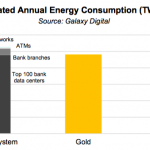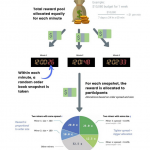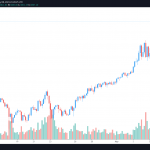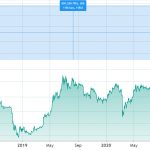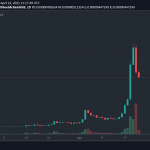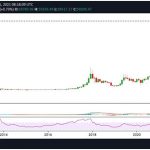- Bitcoin (BTC) trades around $104.5K, down 2% weekly, amid market uncertainty and Mideast tension fears.
- CryptoQuant warns BTC could revisit $92K or $81K if demand keeps falling.
- Glassnode sees “quiet” blockchain as network maturation, with institutions driving large-value transfers.
Bitcoin (BTC) is trading steadily above the $104,500 mark as the Asian trading week gets into full swing.
Despite the ominous backdrop of a potential looming war in the Middle East, the leading cryptocurrency has remained relatively flat on the day with negligible price movement.
In fact, over the past full week, Bitcoin is down only a modest 2%, according to CoinDesk market data.
This apparent calm, however, is prompting a vigorous debate among market analysts: Is this a sign of underlying strength, or is something more precarious brewing beneath the surface?
Three new reports released this week from prominent crypto analytics firms CryptoQuant and Glassnode, along with trading firm Flowdesk, all paint a similar picture of current surface conditions: low volatility, tight price action, and subdued on-chain activity.
A notable shift in market dynamics is also evident, with retail participation reportedly waning while institutional players—ranging from Bitcoin ETF investors to large “whale” holders—are increasingly shaping the structure of market flows.
It is CryptoQuant, however, that is sounding the most urgent cautionary note.
In its June 19 report, the firm argued that Bitcoin could soon revisit the $92,000 support level, or potentially fall as low as $81,000, if current trends of deteriorating demand continue.
According to CryptoQuant, while spot demand for Bitcoin is still increasing, it is doing so at a rate well below its established trend. Inflows into Bitcoin ETFs have reportedly dropped by more than 60% since April, and whale accumulation has halved during the same period.
Furthermore, short-term holders, who are typically newer market participants, have shed approximately 800,000 BTC since late May.
CryptoQuant’s demand momentum indicator, which tracks directional buying strength across key investor cohorts, is now reading a negative 2 million BTC – the lowest level ever recorded in the firm’s dataset.
Glassnode’s counterpoint: a maturing network, not weakness
Glassnode, while acknowledging similar on-chain signals, arrives at a far less dire conclusion.
In its weekly on-chain update, the firm concedes that the Bitcoin blockchain is currently “quiet,” meaning that transaction counts are down, network fees are minimal, and miner revenue is subdued.
However, Glassnode posits that this may not necessarily indicate weakness but could instead be a reflection of the network’s ongoing evolution.
They point out that on-chain settlement volume remains high but is increasingly concentrated in large-value transfers.
This suggests that the Bitcoin blockchain is progressively being utilized by institutions and whales for significant transactions, rather than for smaller, everyday retail activity.
Furthermore, Glassnode notes that the derivatives market now dwarfs on-chain activity, with futures and options volumes regularly exceeding spot market volumes by a factor of 7 to 16 times.
This shift, they argue, has brought with it more sophisticated hedging strategies, better collateral management practices, and an overall more mature, albeit less frenetic, market structure.
The rise of crypto treasury companies: a new financial engineering?
Adding another layer to the evolving market structure, a new report from Presto Research argues that Crypto Treasury Companies (CTCs)—such as Michael Saylor’s MicroStrategy (now Strategy) and Japan’s Metaplanet—are more than just leveraged Bitcoin ETFs.
Presto suggests they represent a new form of financial engineering that may carry less risk than many investors assume.
Strategy’s latest capital raise, which secured nearly $1 billion via perpetual preferred shares, demonstrates how Bitcoin’s inherent volatility can be leveraged to an issuer’s advantage.
These securities, along with convertible bonds and at-the-market equity sales, allow CTCs to fund aggressive crypto accumulation strategies without triggering the margin risks typically associated with leveraged positions.
Presto points out that Strategy’s Bitcoin holdings are unpledged, and Metaplanet’s bonds are unsecured.
This means that collateral liquidation—the primary trigger for past crypto industry blowups like Celsius and Three Arrows Capital—is largely absent in these structures.
While this doesn’t eliminate risk entirely, it fundamentally changes its nature.
The real challenge for CTCs, Presto argues, is not the crypto exposure itself but the discipline required to manage dilution, cash flow, and capital timing effectively.
Metaplanet’s “bitcoin yield” metric, which measures BTC per fully diluted share, reflects this crucial focus on delivering shareholder value.
As long as CTCs can adeptly manage the financial mechanics underpinning their accumulation strategies, Presto believes they will continue to earn Net Asset Value (NAV) premiums, similar to high-growth companies in traditional markets.
However, if they miscalculate, the very tools that fuel their ascent could just as easily accelerate their fall.



